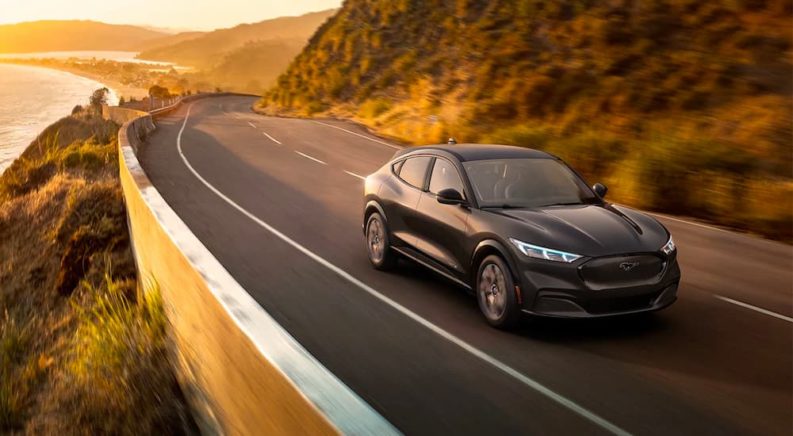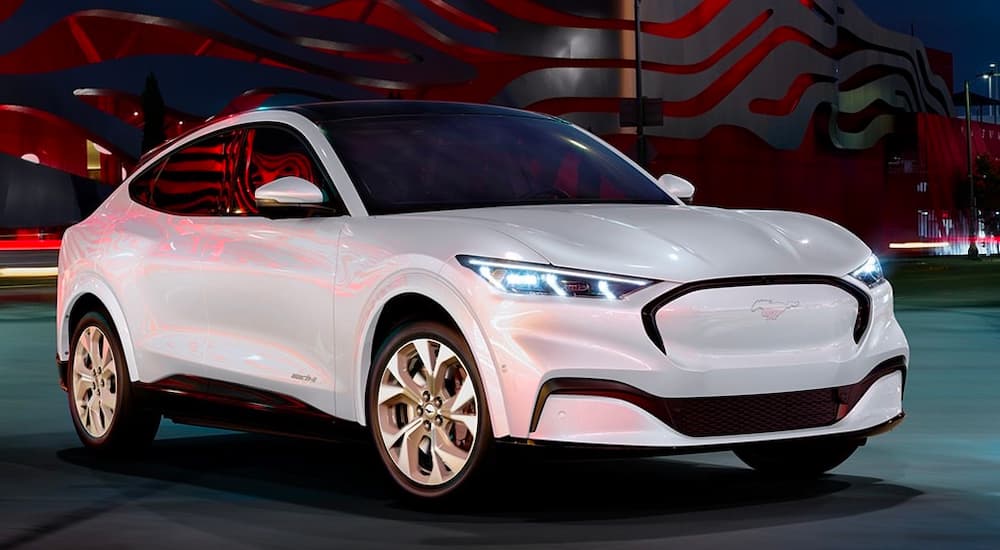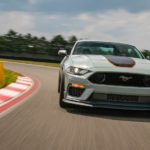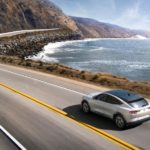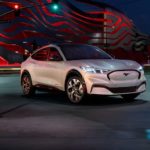The buzz around your local Ford Mach-E dealer is, well, the Mach-E. This machine is part sports car, part efficient SUV, and part spaceship. It’s also unmistakably a Ford. One glance at its very aggressive exterior, particularly the Mustang-inspired taillights, and you’re reminded that while everything evolves eventually, some things bring a little tradition with them.
The Mach-E has a very familiar middle name: formally, it’s the 2021 Ford Mustang Mach-E, and while pony car purists have a bone to pick with Ford’s decision to share the iconic nameplate with an electric vehicle (not to mention that it’s an SUV), Ford rolled the dice and realized that street cred rolls both ways. It’s betting big that buyers will flock to dealers for a Mach-E of their own.
The Mach-E isn’t the only Ford EV that’s stealing headlines – a certain best-selling full-size pickup truck is sharing the spotlight too. Not only has Ford expanded what the name Mustang stands for, but the all-electric F-150 Lightning is sailing down the production line even as we write this. Are buyers ready? Ford is gambling big that the answer is a resounding yes.
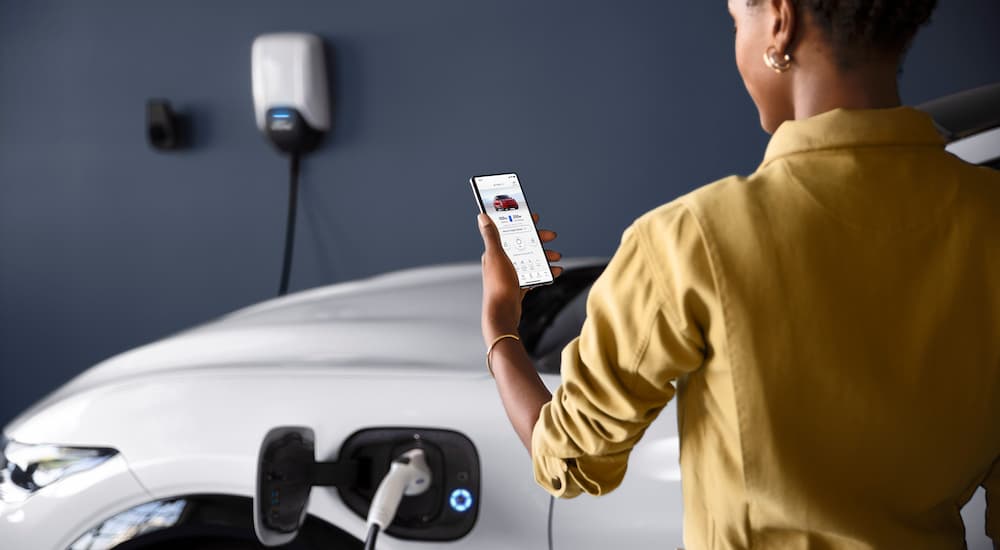
Ford’s Commitment to Electrification
The fact that a major automaker is entering the EV race isn’t big news, but Ford’s bold electrification strategy is. The company has explicitly stated its intention to pursue an all-electric production vehicle lineup. In a May 2021 press release, we learned that Ford has earmarked $22 billion for investment in electrification over the next four years.
That’s huge, but it’s not even the biggest news coming from the blue oval. Ford is wagering its three biggest and most iconic nameplates – the Mustang, the F-150, and the Transit van – on the public’s readiness for EVs. The one, two, three punch starts with the 2021 Mustang Mach-E, is followed by the 2022 Ford F-150 Lightning, and culminates with the reported late-year release of the 2022 E-Transit.
What’s interesting about that last vehicle is its target buyer. Ford Transit vans are a favorite of fleet buyers, a notoriously picky and budget-focused bunch that need reliability, longevity, and really simple vehicle characteristics. This is not a buyer that gets excited about 15-inch touchscreens and Bose audio systems – they want a deal, and they need their van fleet to stand up to hard miles.
In summary, Ford’s electrification strategy is to disrupt the three most iconic and best-selling models in the lineup and funnel big money into electric versions that meet or exceed the performance and capability specs of their gas or diesel-powered siblings. It’s a bold move since most automakers choose the safer path of creating a brand new model and name to test the EV waters. They also don’t immediately commit to mass production the way Ford has with the Mach-E, the Lightning, and the E-Transit.
Equipping the Dealer Network
Even the best and most strategic design and manufacturing strategy will fall flat without distribution. Ford knows this, which is why the company has already enlisted well over 2,300 of its existing dealers to become “EV-certified.” There are even close to 650 locked-and-loaded EV-certified commercial (a.k.a. fleet) dealers ready to assist E-Transit buyers. With a manufacturer as big as Ford leading the charge (no pun intended), it won’t be long before electrified commercial vehicles are more prevalent than gas-powered alternatives.
Dealerships must equip their sales teams with product information and training on the special characteristics of electric vehicles, like charging, EV maintenance, and operation of the onboard technology necessary for drivers to track range and other key EV data. Some percentage of prospective buyers will remain uncertain about buying an EV, and salespeople need to understand how to work with them.
Driving an EV is a completely different experience than getting behind the wheel of a vehicle powered by a combustion engine. As such, knowing the nuances of those differences is key for moving metal. Ford’s dealer network is among the most forward-thinking and highly respected in the industry – it’s unsurprising that the vast majority of Ford dealers have raised their hands and opted in on adding EV infrastructure.
Service is also important because most Ford dealerships don’t traditionally have charging stations on-site. This new infrastructure is a requirement, along with special service equipment and training for technicians. Working on cars sans traditional motors will take some getting used to since owners won’t be stopping by for an oil change.
The Mach-E is the Poster Child for Ford EVs
Every great story has a compelling first chapter, and for Ford’s electrification plan, the first two words are Mustang Mach-E. It’s already running out of room on the mantel, having received Car and Driver’s first-ever 2021 EV of the Year award, earned a 2021 IIHS Top Safety Pick distinction, and bestowed the honor of North American Utility Vehicle of the Year.
In other words, don’t take Ford’s word for it. When reviewing the 2021 Mach-E, Car and Driver described it as a vehicle where “the past and the future collide,” giving it a 9.5/10 rating and praising its road manners. It’s not often that a respected automotive reviewer concurs with a manufacturer’s splashy marketing, but in the case of the Mach-E, that’s exactly what happened. Journalists and industry insiders alike are in agreement that the Mach-E ticks all the boxes.
Properly equipped, the Mach-E is capable of an over 300-mile driving range, laying to rest any range anxiety objections. Buyers needn’t worry about performance either, as opting for the GT Performance Edition trim nets you 480 horsepower and a whopping 634 lb-ft of torque. These are history-making numbers, as is the impressive 0-60 time of just 3.5 seconds.
The Mach-E is poised to set the bar for all other EVs, and it’s going to rapidly accelerate buyers’ acceptance of EV alternatives because of its many attributes. Within the lineup, buyers will find whatever they need, from affordability to all-wheel drive to track-ready speed. It charges faster, offers loads of interior passenger and cargo space, and is infused with insanely futuristic technology that clearly represents the direction its maker has chosen.
Shots Fired: The EV Revolution Starts at Ford
Make no mistake about it; Ford intends to dominate the EV market. Through a series of critical EV launches, the company is starting from the top with the electrification of the best-selling F-150, the launch of a new SUV that bears the name of Ford’s most iconic car in its 100-year history, and a commercial transit van that’s ready for mass production.
Lucky for buyers, the Mach-E is here now. It has confidently taken its place at the helm of Ford’s EV battleship, proudly wearing the Mustang name. From a historical perspective, this vehicle is no less meaningful than Henry Ford’s original Model T. It’s the first all-electric production Ford vehicle, and it will take its place in the Ford legacy with that distinction.
The innovations don’t end there. Ford has announced strategic partnerships with other manufacturers, like the EV start-up Rivian, that will add more EV expertise and expand Ford’s reach in the segment. The company is also engaged in a robust R&D effort at its Ford Ion Park facility to improve battery technology, including sourcing materials and finding ways to increase range and power.
It’s an exciting time for Ford fans. Led by the dynamic 2021 Mustang Mach-E, Ford is blazing a trail through the EV landscape and causing us to wonder why we’re not all behind the wheel of an EV.

